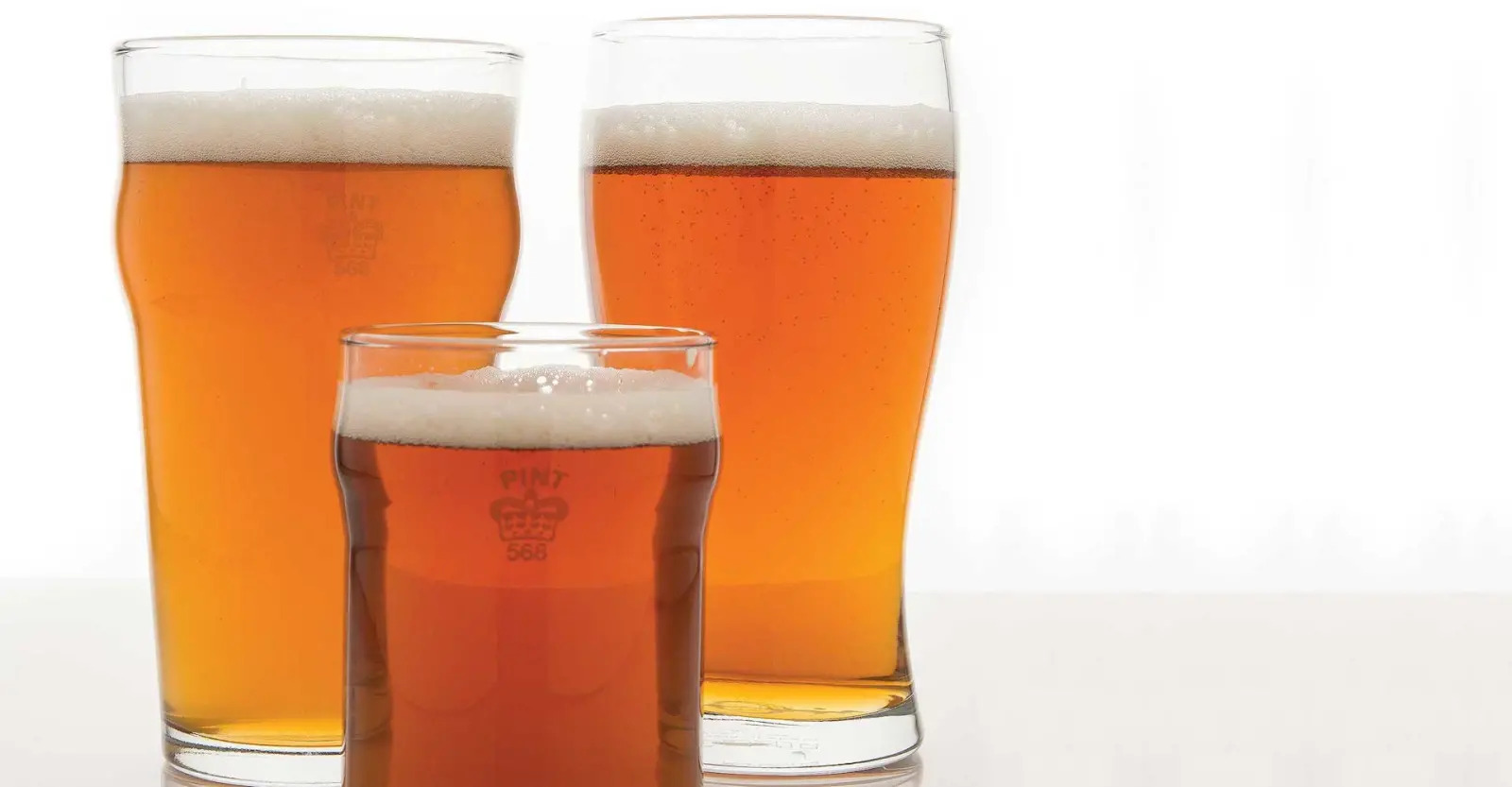Kellerbier merges the best of British cask ale with German malts and hops in a unique lager style. It has an atypical flavor profile that, depending on your finishing steps, can represent itself as a kind of German ESB or a Continental IPA.
Der Falke Kellerbier
Der Falke Kellerbier is a unique blend of British cask ale and German malts and hops. This lager style beer has an atypical flavor profile that can be tweaked to represent a German ESB or a Continental IPA.
Ingredients
- 6 lb (2.7 kg) Vienna malt
- 3 lb (1.4 kg) Pilsner malt
- 4 oz (113 g) Carafa II
- 4 oz (113 g) Melanoidin malt
- 0.38 oz (11 g) each Northern Brewer [8% AA] and Hallertau [4.5% AA] at 60 minutes
- 0.38 oz (11 g) each Northern Brewer and Hallertau at 30 minutes
- 0.38 oz (11 g) each Northern Brewer and Hallertau at 10 minutes
- Wyeast 2206 (Bavarian Lager)
Directions
- Mill the grains and mix with 3 gallons (11.2 l) of 163°F (73°C) strike water to reach a mash temperature of 152°F (67°C). Hold this temperature for 60 minutes.
- Vorlauf until your runnings are clear, then run off into the kettle.
- Sparge the grains with 4.3 gallons (16.5 l) and top up as necessary to obtain 6 gallons (23 l) of wort. Boil for 60 minutes, following the hops schedule.
- After the boil, chill the wort to slightly below fermentation temperature, about 50°F (10°C). Aerate the wort and pitch the yeast.
- Ferment at 50°F (18°C) for five days, and then allow to free-rise, but not higher than 64°F (18°C). Upon reaching terminal gravity, cold crash and bottle or keg the beer, and carbonate to about 1 volume of CO2 for “cask-feel” lager or 2 volumes for more conventional carbonation.
- Drink this beer as soon as it’s carbonated! Kellerbier is, by tradition, a “young” beer and should be consumed early, rough edges and all. Some versions exhibit signs of incomplete fermentation (acetaldehyde, for example) but here we’re relying on the Vienna malt to provide a nice raw graininess. Don’t worry if it isn’t clear yet: hazy versions of this beer abound, and you needn’t take any particular steps to clear it up!

